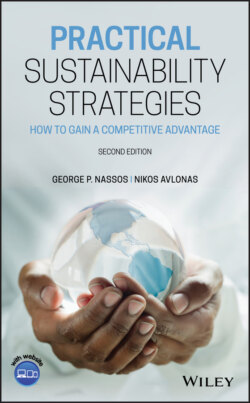Читать книгу Practical Sustainability Strategies - George P. Nassos - Страница 36
CHAPTER 4 The Natural Step
ОглавлениеIn Chapter 3, we discussed the development of the UN Sustainable Development Goals (UNSDGs) and various other principles that can be considered as guides to achieving environmental and social sustainability. One of the principles not mentioned is The Natural Step (TNS). This one is somewhat unique and deserves special mention.
In the late 1980s, Karl-Henrik Robèrt, a Swedish medical doctor and cancer-treatment researcher could not help but be confused between two groups of people. On one hand, there were some people that were more concerned with increasing their personal wealth than a concern with the environment and its potential impact on children. And on the other hand, he was seeing concerned parents bringing to the hospital cancer-diseased children.
Dr. Robèrt became obsessed about the potential destruction of the environment. He saw humankind running into a funnel of declining life-sustaining resources and increasing demands [1]. He was aware of the various environmental issues like climate change, increased pollution, water scarcity, and all of which would be compounded with population growth. At the same time, he was not sure whether businesses would focus beyond short-term profits to long-term growth for the good of the environment, or whether there would be any legislation to make it happen. He then began to think: “My epiphany came one day when I was studying cells from cancer patients. It hit me that cells are the unifying unit of all living things. The difference between our cells and the cells of plants are so minor that it's almost embarrassing; the makeup is almost identical all the way down to the molecular level.” [2].
Dr. Robèrt drafted a first version of such a “consensus document” and sent this draft to a broad cross-section of scientists, including over 50 ecologists, chemists, physicists, and medical doctors in Sweden and asked for their input. Twenty-one drafts later, there was at last consensus about what is in principle needed to sustain the human civilization on earth. With the support of His Majesty the King of Sweden, Carl XVI Gustaf, this “consensus document” and accompanying audio tape were sent to every household and school in Sweden.
Based on this document, in 1989 Dr. Robèrt started TNS, an environmental not-for-profit organization in Sweden. He wanted to address these troubling environmental problems and seek advice and expertise of a growing circle of scientists, economists, business leaders, and other stakeholders in society. This dialogue with key participants spread throughout the world, and, as a result, TNS organizations were launched in the United States and other countries like Canada, the United Kingdom, Australia, and New Zealand.
Robèrt and his advisors developed a simple framework to look at the impact of the environment on businesses and how to provide a means for businesses to become sustainable. The framework was based on systems thinking, which is looking at the whole system, but in such a way that it can be made simple, thus allowing it to apply to almost any organization. The framework includes the following four core processes [1]:
Perceiving the nature of the unsustainable direction of business and society and the self-interest implicit in shifting to a sustainable direction
Understanding the first-order principles for sustainability, that is, the four System Conditions
Strategic visioning through “back-casting” from a desired sustainable future
Identifying strategic steps to move the company from its current reality toward its desired vision
He then applied the funnel effect to show how the supply and demand of environmental resources are converging. This impact on the environment can be best described as follows [3]:
Global society is currently unsustainable. Because we only have one planet Earth, and the laws of thermodynamics are such that matter and energy cannot be created or destroyed, there are limits to how much we can grow—in terms of both sources (the resources we use) and sinks (the natural systems where we deposit our waste). We are currently surpassing those limits because on the one hand population, consumption, competitiveness, and pollution are systematically increasing, while on the other hand resources, purity, ecosystems, and social equity are systematically decreasing.
FIGURE 4.1 The funnel.
A “whole systems” perspective is necessary in sustainable development, as the various problems (greenhouse gases, extreme poverty, deforestation, illiteracy, etc.) are inherently interrelated and complex.
The funnel (Fig. 4.1) metaphor is a way of thinking about the unsustainable path that global society is on, where our space for deciding on options is becoming narrower and narrower per capita. This is very different from the illusion that limits to growth are represented by a “cylinder” where isolated social and ecological impacts can be addressed and “solved” separately.
The negative effects of society's unsustainable path can be described as “hitting the funnel walls.” Organizations (communities, businesses, project teams, etc.) can feel the impact of hitting the funnel walls in a variety of ways, including the following:
Increased costs for resources and waste management
Lost investment in projects that quickly become obsolete
Stricter legislation
Litigation
Loss of market share to more cutting edge
Insurance costs
Consumer and shareholder activism
Loss of good reputation
Organizations that have an understanding of the funnel will be better able to act strategically, communicate more effectively to internal and external stakeholders, and lead the shift toward a sustainable society.
